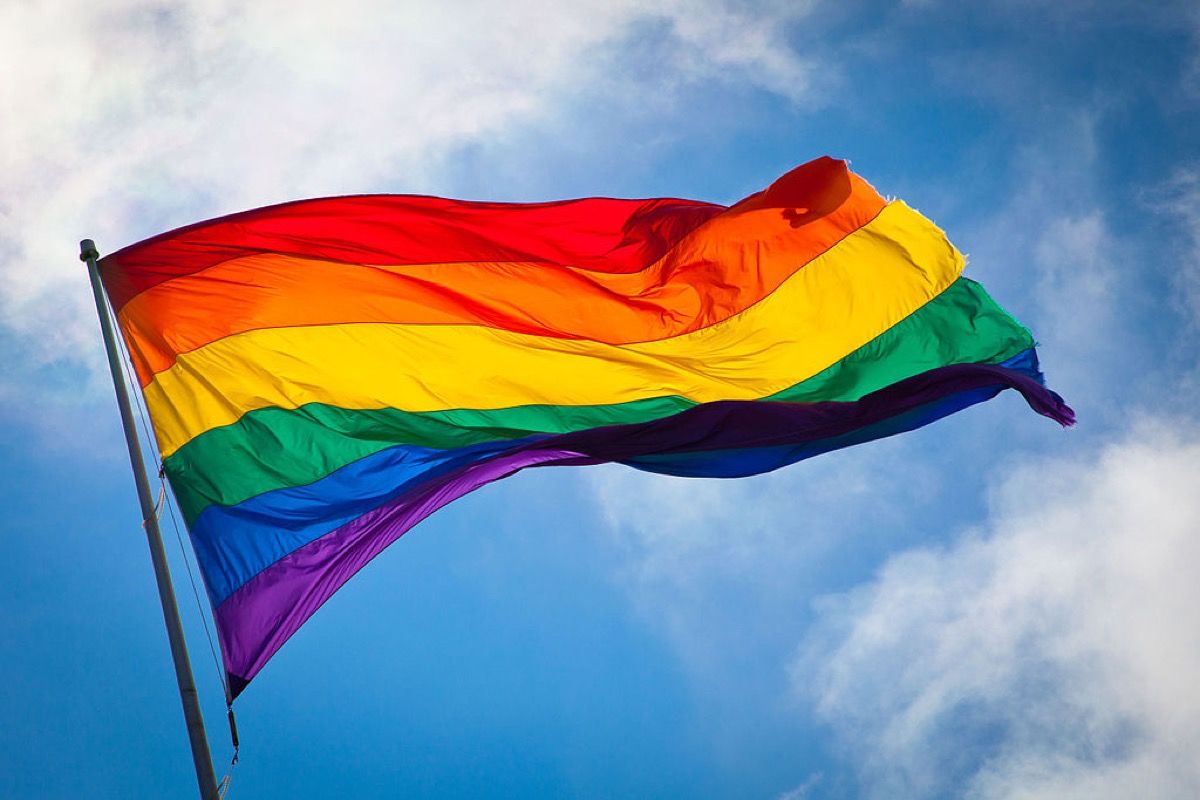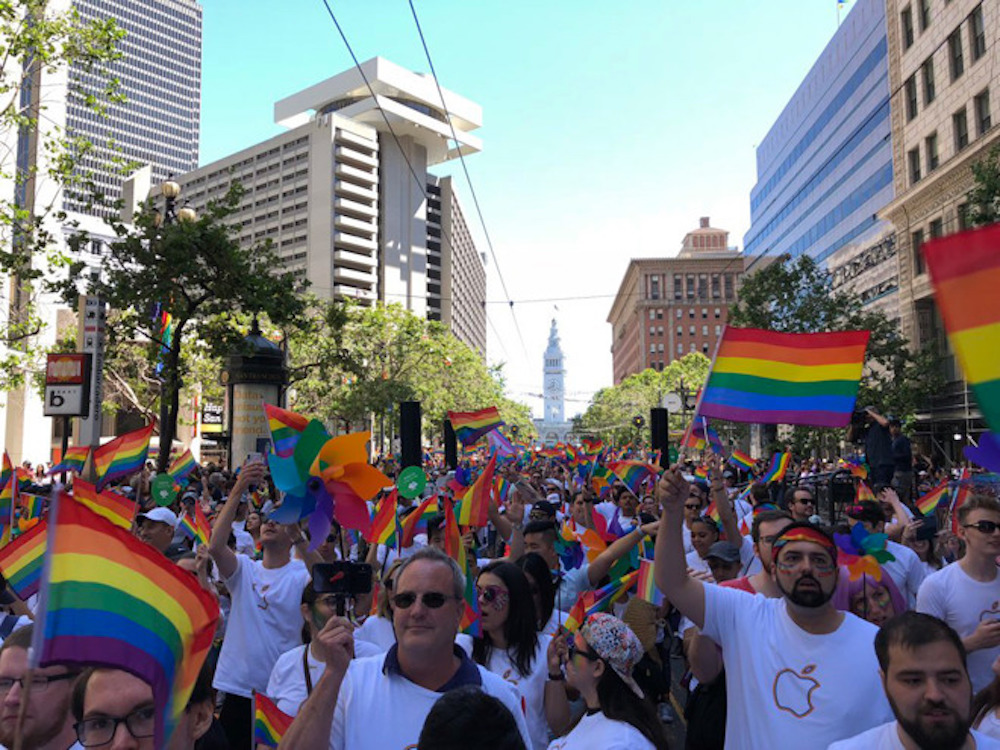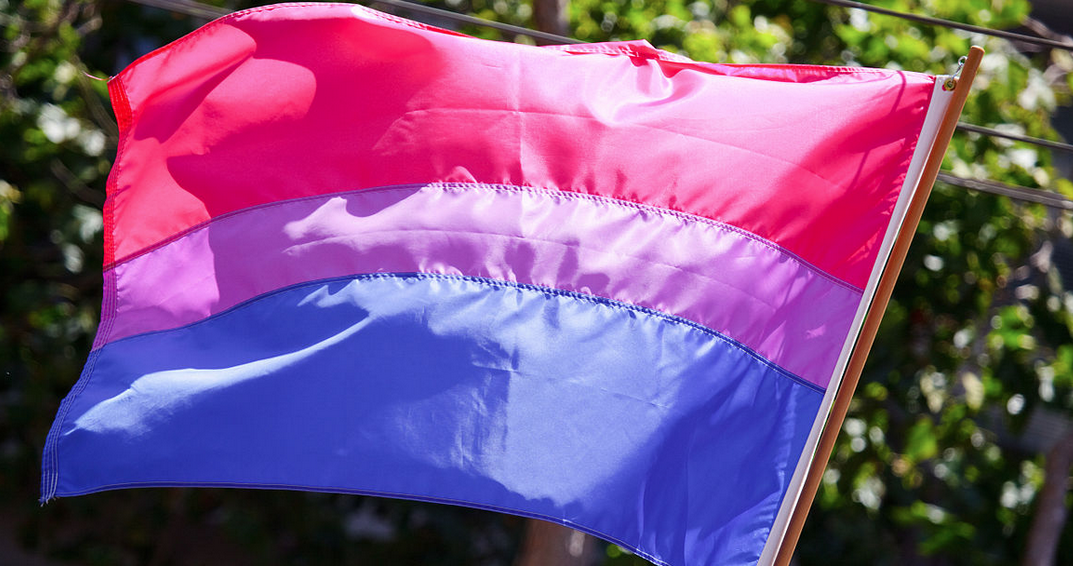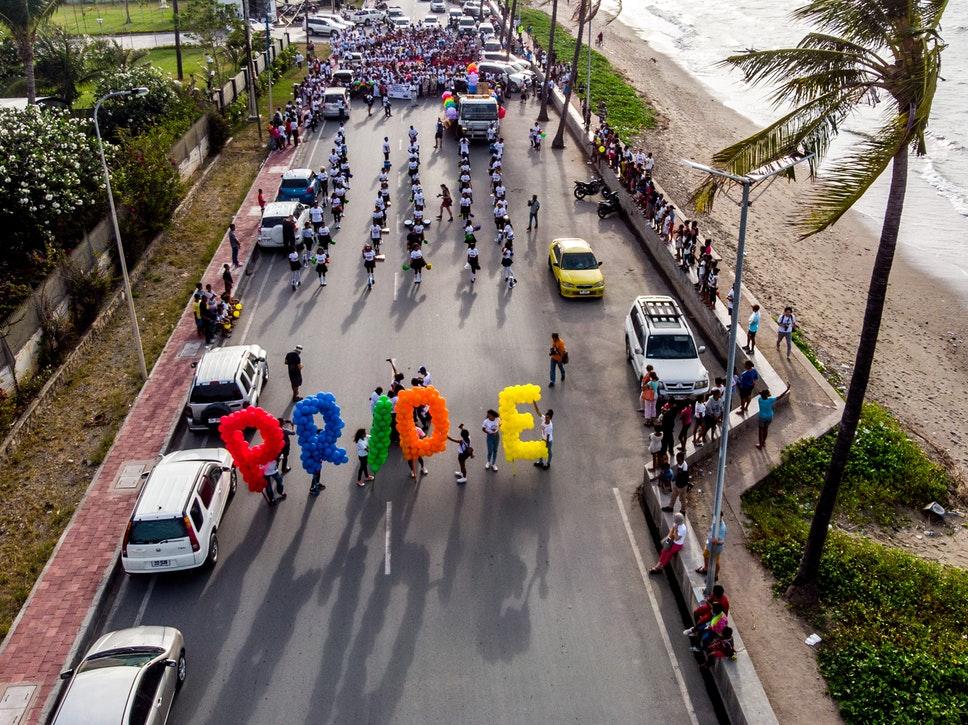The LGBT (Lesbian, Gay, Bisexual, Transgender) community has taken on specific symbols of self-identification to validate pride, shared values, unity and loyalty to one another. The idea behind these symbols is to convey concepts, identity, and ideas within the mainstream culture as well as their communities. The two most well-known symbols are as following:
1. Rainbow flag

Gilbert Baker created the Rainbow flag in 1978 for the San Francisco Gay Freedom Celebration. The flag doesn’t portray an actual rainbow. It has horizontal stripes and six colors, with the red on the top and the violet on the bottom. It characterizes the diversity of lesbians and gays all over the world. In the initial design, the eight colors represented the following:
- Pink – Sexuality
- Red – Life
- Orange – Healing
- Yellow – The sun
- Green – Nature
- Turquoise – Art
- Indigo – Harmony
- Violet – Spirit
2. Pink Triangle
The Nazis adopted the pink triangle during World War II as an emblem of shame. The symbol was re-directed but preserved adverse connotations.
Other Flags Representing the IGBT Communities:
3. Asexuality Pride

This IGBT flag has four horizontal stripes and contains the colors black, gray, white and purple. It was created in August of 2010, and the colors are representing:
- Black – Asexuality
- Gray – Gray-aces and demi-sexuals
- White – Allies
- Purple – Community
4. Bear Culture Pride Flag
The word bear is an endearing gay slang term for individuals in bear communities, a sub-culture among the gay community and an evolving subdivision of the LGBT community. They host their own events, have their own codes and culture-specific individuality. Bears are generally bisexual, gay or transgender men (irrespective of their sexuality) and those who reject labels of sexuality and gender are progressively accepted within the bear communities. Bear clubs exist in many countries all over the world, and the bear events are commonplace in comprehensively gay communities.
5. Bisexuality Pride Flag
The Bisexuality pride flag was designed by Michael Page and revealed on 05 December 1998. It represents an improved visibility of bisexual individuals in society and the LGBT community altogether.
The rectangular flag has the following colors:
- Wide Pink stripe on the top – Sexual attraction to the same sex only (gay and lesbian)
- Wide Blue stripe on the bottom – Sexual attraction to the opposite sex only (straight)
- Narrow, deep lavender stripe in the middle – sexual attraction to both sexes (bi)

The significance of the deep lavender color is an indication of the purple pixels unnoticeably blending into both pink and blue, just like in a society where bi people imperceptibly blends into both straight and gay/lesbian communities. The blue and pink overlapping triangle sign is representing bi pride and bisexuality.
5. Pansexual Pride Flag
This flag has been located on various internet sites since the mid-2010s and has three horizontal bars. The colors include:
- Pink – women
- Blue – men
- Yellow – non-binary gender (such as bigender, agender or genderfluid)
A symbol of a P with the tail converted into an arrow with a cross is often used. The cross on the P’s tail is referring to the cross on the female or Venus symbol, and the arrow is referring to the arrow on the male or Mars symbol.

